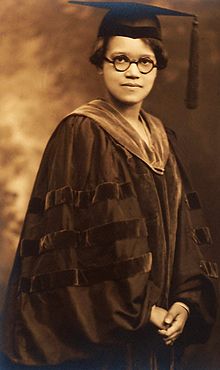IllmaticDelta
Veteran

Dr. Hadiyah-Nicole Green
Hadiyah-Nicole Green is an American medical physicist known for her development of a novel cancer treatment using laser-activated nanoparticles.[1][2
Dr. Hadiyah-Nicole Green is a multi-disciplinary physicist and the recipient of a $1.1 million research award that she will use to study her unique LANT (laser-activated nano-therapy) multi-cancer treatment. In trials with mice, this method targeted cancer cells and was able to spare healthy surrounding cells with great success. Her treatment does not bring with it the difficult side effects that come with many traditional cancer treatments such as radiation, chemotherapy, and surgery which, as you’ll learn below, is a very important factor to Green. Green believes this LANT will evolve into an effective outpatient treatment for many types of cancer.
Green’s Research
Green’s LANT system which she spent seven years developing at UAB is a three-part targeting, imaging, and treatment process. In her own explanation, this system
enables the combination of tumor receptor site targeting, targeted nanoparticle delivery, fluorescent imaging, and laser-activated nanoparticle therapy that results in marked tumor regression in mice.
During the treatment, FDA approved nano-particles cause the cancer cells to fluoresce when viewed with imaging equipment. A laser then activates and heats the nanoparticles, creating a thermal death for the cancer cells. The laser and nanoparticles are both harmless when not combined, which Green explains boosts the treatment’s ability to target cancer cells and avoid healthy cells.
While the use of lasers and nanoparticles in cancer treatment has been previously studied, Green’s successful nanoparticle delivery and live-animal tumor reduction rates stand out. Her report shares that mice showed “~100% tumor regression (shrinkage) over 15 days after one laser-activated nano-therapy treatment.” The visible absence of the mouse tumor after 15 days was confirmed by a board certified pathologist. Her summary report has an inspiring title: “Shining Light on a Big Problem with a Really Small Solution.” She shares in the Al.com article that, "As a physicist, I've created a physical treatment that is not specific to the biology of the cancer. It's a platform technology.”
What’s Next for Green?
Green hopes and plans that within about three to five years, her unique LANT process will be a proven photo-nano-therapy treatment for many types of cancers, including cervical, bladder, breast, ovarian, skin, colorectal, prostate, and pancreatic. It is intended to be used as both an initial and adjuvant therapy and as a more affordable, minimally invasive outpatient treatment with minimal side effects.















